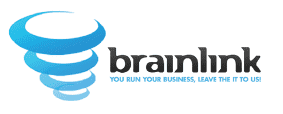The AI Arbitrage Window: Why Waiting Will Cost You 3x More (And The Advantage)
Your CFO wants to “wait and see” how AI plays out.
Smart, conservative, reasonable.
Also: expensive.
The Arbitrage Opportunity Nobody’s Pricing In
Right now, in November 2025, there’s a pricing and competitive arbitrage window that won’t last.
Today’s market:
- AI implementation costs: $40-60k for comprehensive automation
- Competitor adoption in most markets: <20%
- Quality of available implementation partners: high (early players are good)
- Time to ROI: 2-4 months
2027’s market (projected):
- AI implementation costs: $120-180k for the same automation
- Competitor adoption: >70%
- Quality of available implementation partners: commoditized
- Time to ROI: still 2-4 months (but you’re 24 months behind)
The math is brutal.
Why Prices Will Triple
“Wait, why would automation get MORE expensive?”
Three reasons:
1. Demand Surge
Right now, most firms are still in “assessment mode.” They’re reading articles. Attending webinars. Thinking about it.
In 18-24 months, when the case studies are undeniable, everyone will implement simultaneously.
Demand surge → price spike.
We’re already seeing this in larger firms: construction companies that could’ve implemented for $50k in 2023 are paying $150k+ in 2025 because now they’re competing with 50 other firms for the same implementation resources.
2. Panic Premium
Firms that wait aren’t just paying for implementation. They’re paying to catch up.
Early adopters are methodical: “Let’s automate workflows A, B, and C this quarter.”
Late movers are desperate: “We need EVERYTHING automated YESTERDAY because our competitor is crushing us.”
Desperation doesn’t negotiate. It pays premiums.
3. Commoditization (The Paradox)
You’d think commoditization would reduce prices. Sometimes it does.
But in AI implementation, commoditization means:
- Lower quality providers flooding the market
- More time spent evaluating (paralysis)
- More failed implementations (requiring re-dos)
- Higher total cost of ownership
Early market = boutique providers who are really good
Late market = commoditized providers who are really cheap (and you get what you pay for)
The Competitive Advantage Compound
Here’s what nobody’s modeling:
Month 1 of automation:
- Early adopter gains 10% operational efficiency
- Their competitor gains 0%
- Gap: 10%
Month 12:
- Early adopter has optimized automation, gained 30% efficiency, reinvested savings into 2 new strategic initiatives
- Competitor just started “AI assessment”
- Gap: 30%+ plus strategic initiatives
Month 24:
- Early adopter has 50% efficiency gain compounded with 4 strategic initiatives that are bearing fruit
- Competitor is 6 months into implementation, just starting to see efficiency gains
- Gap: un-closeable
One managing partner told us this story:
“We automated our project management operations 18 months ago. Saved 30 hours/week, reinvested that into business development strategy, grew revenue 2.3x.
Our main competitor watched us. They were ‘waiting to see how it played out for us.’
Now they’re automating. But we’re 18 months ahead. They’ll never catch up.
They’ll spend the next 2 years implementing what we implemented in 2023… while we’re implementing the 2025 version.
The gap doesn’t close. It widens.”
The “Wait for Proof” Paradox
Conservative CFOs say: “Let’s wait until the ROI is proven.”
But here’s the paradox:
By the time ROI is “proven” (indisputable case studies, industry adoption >50%), the advantage evaporates.
Early adopter mindset:
“The ROI looks promising at 70% confidence. Let’s invest $50k and test.”
- If it works: massive advantage
- If it fails: $50k tuition on what doesn’t work
Late mover mindset:
“Now that ROI is proven at 95% confidence, let’s invest.”
- If it works: you catch up to average (no advantage)
- You also pay $150k instead of $50k
- And you’re 24 months behind
The “safe” move becomes the expensive move.
Real Example: The Family Office That Waited
I talked to a family office principal last month.
“We’ve been watching [competitor firm] automate their operations for 2 years. It clearly works. They’re managing 40% more AUM with the same team size. We’re ready to implement now.”
I asked: “Why didn’t you implement when they did?”
“We wanted to see if it actually worked first.”
The cost of “seeing if it actually worked”:
- 24 months of operational inefficiency
- Lost opportunity to take on $200M+ more AUM with existing capacity
- Now paying $80k for automation that would’ve cost $35k in 2023
- Zero chance of catching their competitor’s operational advantage
The cost of proof: $200M+ in lost growth capacity.
The Window Is Closing
Here’s where we are in the adoption curve:
2023-2024: Innovators (2.5% of market)
- Took big risks
- Built custom solutions
- Many failures, some huge wins
2025 (Now): Early Adopters (13.5% of market) ← YOU ARE HERE
- Taking calculated risks
- Implementation is proven but not obvious
- Low competition for implementation resources
- Prices are rational
2026-2027: Early Majority (34% of market)
- “Safe” to implement (everyone’s doing it)
- High competition for implementation resources
- Prices spike
- Advantage disappears
2028+: Late Majority (34% of market)
- Required to stay competitive (not advantageous)
- Commoditized solutions
- Zero differentiation
If you’re reading this in November 2025, you’re in the early adopter window.
The innovation risk is gone (we know this works).
The competition risk is still low (most of your competitors are still “assessing”).
The price is rational (before the demand surge).
This window closes in 12-18 months.
What To Do About It
I’m not saying “implement AI blindly because FOMO.”
I’m saying: run the math on what waiting costs.
Cost of implementing today:
- $40-60k implementation
- 2-4 months to ROI
- 24 months of compound advantage
Cost of implementing in 2027:
- $120-180k implementation (3x)
- 2-4 months to ROI (same)
- 0 months of advantage (you’re catching up, not leading)
- Lost opportunity cost during 24-month delay ($200k-500k depending on your business)
The “wait and see” approach costs $200-500k in opportunity cost plus $60-120k in price premium.
Total cost of waiting: $260-620k
Total cost of acting now: $40-60k
Different math. Different decision.
The Question Your CFO Should Ask
Not: “Is the ROI proven?”
Instead: “What does waiting cost us?”
Because waiting has a price. And that price is compounding daily.











